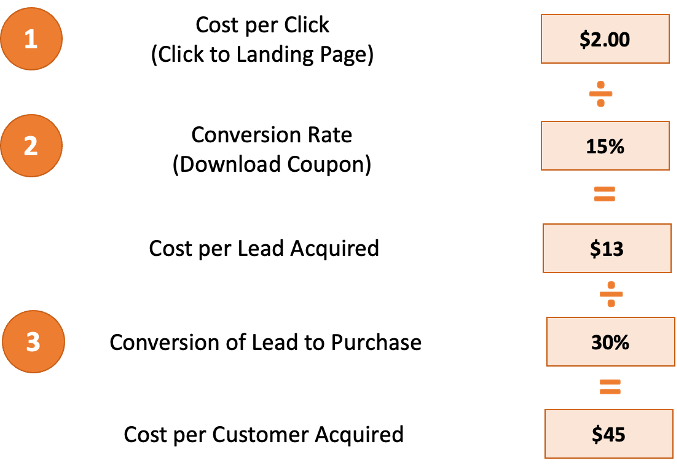The truth is that, properly measured, most marketing initiatives don’t work. They fail. Think about it. If profitably growing revenue was as easy as just adding some marketing, all businesses would succeed. However, most executives, outside of marketing, do not understand this. They view Marketing the same as other functions (Finance, Supply Chain, IT) where you expect it to always work. If it doesn’t, it’s a failure of the team. If the systems are down, if the trucks are late, if the expense forecast is wrong … those are most often failures of the teams to execute. If most of your marketing “works”, you are most likely measuring it incorrectly … by not including only the incrementality in the results.
For marketing to work, the campaigns have to get consumers to change their behavior for a cost that is significantly lower than the gross profit that the behavior change generates. This is without question the most difficult problem in business to solve. When you measure the incremental results, it makes the equation even more difficult. Which is why so many marketing teams turn a blind eye to incrementality measurement or try it and don’t want to believe the results. It’s simple too painful and can jeopardize your job.
Here is a recipe to solving this challenge:
Step 1: Educate. Spend time educating your peers and your leaders about the difficulty in developing successful marketing programs. Position the discussion in a positive light … that you are going to measure marketing results accurately and with integrity. My rule of thumb is that marketing is as difficult as major league hitting … if you are successful 3 out of 10 times, you are best in class.
Step 2: Know Your Success Criteria: Calculate the max that you can spend to achieve your outcome (a new customer, a loyalty sign-up, a marketing qualified lead, etc). This calculation is often wrong, so pay attention to the profitability of the equation.
Step 3: Test: The only way to measure incrementality is to test campaigns vs. a control group. Nothing can replace the scientific method. Yes, it’s more difficult to set-up and run a test. Yes, it’s a lot slower to test with control groups. And yes, it’s the only wat to accurately measure marketing, so get over it.
Step 4: Estimate Scaling: Will the cost to run the campaign be the same at scale as in the test? Often, the cost is lower at scale (a direct mail piece, for example). Will the success rate be the same or will you face diminishing returns? Sometimes the test audience is better than the scaled audience which will artificially inflate the results.
Step 5: Scale the things that work. Test regularly, but in most cases, it only takes a few campaigns to work for most companies. Don’t fall into the trap of trying to do everything.






